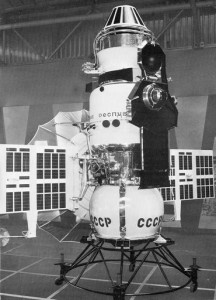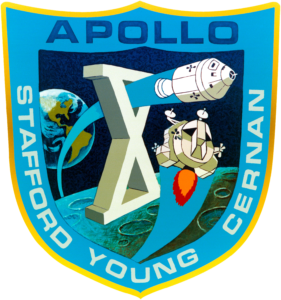Space Exploration
Launch of Venera 4
June 12, 1967
The Soviet probe Venera 4 is successfully launched. On October 18, 1967, it will enter Venus’ atmosphere where it will become the first space probe to successfully return atmospheric data from another planet.
US Soft Lands on Moon

NASA’s lunar lander Surveyor 1 lands in Oceanus Procellarum (“Ocean of Storms”) on the Moon, becoming the first US spacecraft to soft-land on an extraterrestrial body. The previous Ranger program sent craft that had hard-landings (i.e. crash landings). However, the Soviet spacecraft, Luna 9, claims the honor of being the first to soft-land on the moon, almost exactly 4 months prior to Surveyor 1.
Discovery Docks with International Space Station
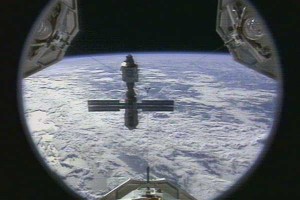
The Space Shuttle Discovery completes the first docking with the International Space Station (ISS).
Launch of Apollo 10
Apollo 10 launches from the Kennedy Space Center. It would be the final “dress rehearsal” flight to the moon before Apollo 11 would make the first Moon landing two months later. NASA had considered making Apollo 10 the first Moon landing, but mission planners decided that it would be best to have a practice flight where all systems and procedures were tested up to the point where the lunar module would actually make powered descent to the Moon. Apollo 10’s lunar module, given the call sign “Snoopy” would make it to within 15 kilometers of the Moon’s surface, taking pictures of the proposed Apollo 11 landing site and testing the lunar module’s landing radar. It would dock back with the command module, given call sign “Charlie Brown”, after nearly 8 hours in orbit.
Apollo 10 holds some interesting distinctions. It was the first mission to carry a color TV camera so Earth viewers received the first color TV images of the planet. Apollo 10’s crew was the first to successfully shave in space. Apollo 10’s crew also set the record for the fastest speed any humans have traveled relative to Earth. Ultimately, the thorough testing of systems, photographs of the Moon’s surface, and data returned from the Apollo 10 mission cleared the way for Apollo 11 to make the first human landing on the Moon.
Skylab Launched
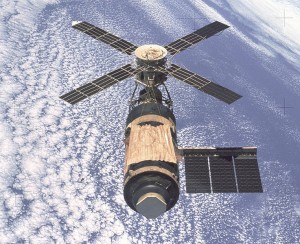
The United States launches Skylab One, its first manned space station. It is the last launch of the Saturn V rocket, and the the largest payload ever launched into space at the time. Skylab will fall back into the Earth’s atmosphere in July 1979.
First American in Space
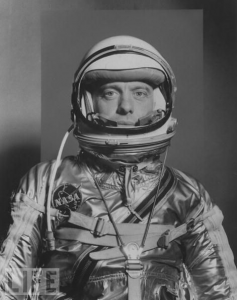
NASA astronaut Alan Shepard becomes the first American in space when he makes a fifteen minute suborbital flight aboard the Mercury capsule Freedom 7. He reaches an altitude of 115 miles, during which he experiences about five minutes of weightlessness.
Hubble Deployed
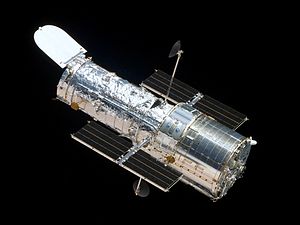
The crew of the Space Shuttle Discovery deploys the $2.5 billion Hubble Space Telescope. There will be initial difficulties caused by a flaw in the design of the telescope’s main mirror. Image correction software will keep the telescope useful until corrective optics are installed December of 1993.
Surveyor 3 Launched
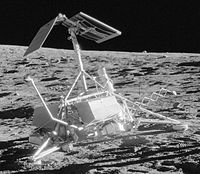
The spacecraft Surveyor 3 is launched from Cape Kennedy, Florida. It is the second U.S. spacecraft to make a soft landing on the Moon (Surveyor 2 crash landed) where it will study the lunar surface and send more than 6,300 pictures back to Earth. In all, seven Surveyors will be sent to the Moon, five of them successfully completing soft landings.
Columbia Lands
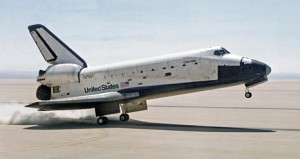
The first test flight of the first operational space shuttle, the Columbia, ends successfully as the orbiter lands at Edwards Air Force Base in California.
Houston, We’ve Had a Problem
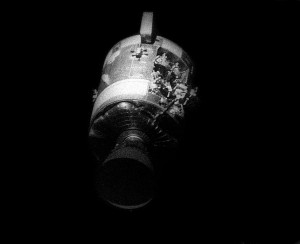
An oxygen tank aboard the Service Module of Apollo 13 explodes. Moments later, astronaut Jack Swigert announces the later-famous phrase, “Houston, we’ve had a problem here.” The explosion cripples the spacecrafts, resulting in a near-complete loss of electricity and oxygen. The oxygen leak will force the crew to abandon the command module for the lunar module as a makeshift “lifeboat” becoming stranded for four days, more than two hundred thousand miles from Earth, while NASA plans the most spectacular rescue mission in U.S. space history. Against all odds, the three astronauts will return safely back to Earth.

